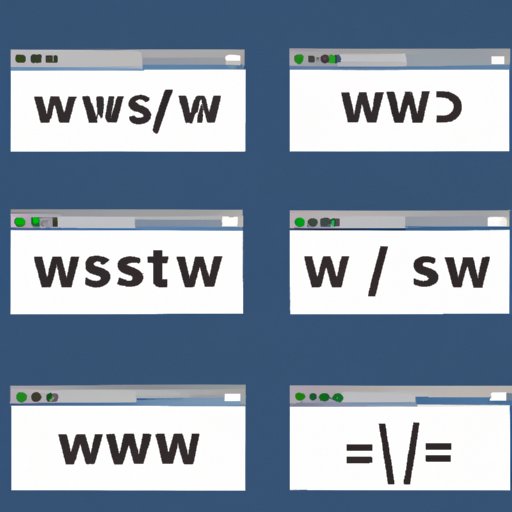Introduction
Having an online presence is essential for any business or organization in today’s digital world. A website is one of the most important tools for connecting with customers, building brand recognition, and sharing information. But how do you go about starting a website? This step-by-step guide will walk you through the process, from selecting a domain name to setting up security protocols.
Choosing a Domain Name
Your domain name is the address of your website, and it should reflect your brand and be easy to remember. It can be anything from your company name to a keyword phrase related to your industry. When selecting a domain name, consider using keywords that describe your business, avoiding hyphens and numbers, and keeping it as short and memorable as possible. Once you’ve chosen a domain name, you can register it through a domain registrar.
Necessary Tools and Resources
To build a website, you’ll need a few different tools and resources. You’ll need a hosting provider to store your website files, a content management system (CMS) to help you manage your website, and a text editor to write and edit HTML, CSS, and other programming languages. You’ll also need images, videos, and other forms of media to make your website look professional. Fortunately, there are many affordable options available for acquiring these tools and resources.
Basics of Web Design and Development
Once you have the necessary tools and resources, it’s time to start designing and developing your website. To do this, you’ll need to understand basic web design principles, such as creating an effective layout, using colors and fonts to convey a message, and organizing content in an intuitive way. You’ll also need to learn the basics of HTML and CSS, the two most popular programming languages used for web development. Additionally, you may want to explore content management systems, such as WordPress or Joomla, which provide an easy way to create and manage websites.

Pros and Cons of Different Platforms
When creating your website, you’ll need to decide which platform to use. Popular platforms include WordPress, Squarespace, Wix, and Shopify. Each platform has its own pros and cons, so it’s important to research each one and determine which is best for your needs. For example, if you’re looking to create an ecommerce store, Shopify might be the best option, whereas WordPress is better suited for blogs and other content-heavy websites.
Securing Your Website
Once your website is built, you’ll want to ensure it’s properly secured. This means following best practices for website security, such as using strong passwords, keeping software up to date, and regularly backing up your data. You’ll also want to set up an SSL certificate, which encrypts data sent between your website and visitors’ browsers. This helps protect sensitive information, such as credit card numbers, and ensures visitors know your website is secure.
Conclusion
Creating a website doesn’t have to be intimidating. By following the steps outlined in this guide, you’ll be able to create a website that meets your needs and stands out from the competition. From selecting a domain name to setting up security protocols, this guide has everything you need to get started.
(Note: Is this article not meeting your expectations? Do you have knowledge or insights to share? Unlock new opportunities and expand your reach by joining our authors team. Click Registration to join us and share your expertise with our readers.)
